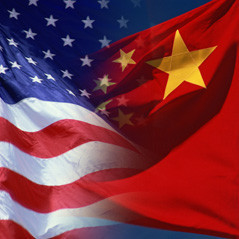Although generics will increase their share of all prescriptions in China and the US over the next 10 years, economic and structural incentives for new drug invention and brand-name prescribing by physicians will keep the share of patented drug sales high compared with countries that have more direct government control over the pharmaceutical market [1].
China and the US will be the two largest country markets for drug sales and industry research and development by 2020 thanks to a combination of expanding health insurance coverage, free-market drug pricing policies and government support for biomedical research.
Although at different stages in economic development and with very different health insurance markets and healthcare provision, China and the US face the same challenges of a large ageing population and the need for both medical innovation and affordable drugs.
Researchers Arthur Daemmrich and Ansuman Mohanty estimated prescription sales in the two countries for 2015 and 2020, analysing the sustainability of free-market pricing for drugs and assessing future competitive dynamics in the pharmaceutical sector [1].
In China, a fragmented generics industry, coupled with public fears of fake or diluted domestically produced medicines [2, 3], is offering significant potential for the growth of brand-name pharmaceutical sales over generics.
In the US, generics expanded from 30% of all prescriptions dispensed in the 1980s to 75% in 2010. However, generics prescriptions generated just 16.5% of the pharmaceutical market’s value in 2010, write the authors [1]. As new drugs enter clinical trials to treat diseases that impact millions of senior citizens – including cancer, arthritis, Parkinson’s and Alzheimer’s diseases – brand-name drugs will continue to lead total sales.
While China and the US are expanding public and private insurance systems in an effort to broaden access to care and support preventive medicine, most other developed and developing countries are advancing policies to stabilize or even reduce national healthcare spending, especially on prescription drugs [4]. Healthcare system reforms underway in China and the US leave unresolved a core tension between incentives for new drug invention and universal access to affordable medicines.
Related Article
Access to medicines in Shaanxi province China
China follows the Indian and Thai route to affordable drugs
Reference
1. Daemmrich A, Mohanty A. Healthcare reform in the United States and China: pharmaceutical market implications. J Pharm Policy Pract. 2014;7(1):9.
2. GaBI Online - Generics and Biosimilars Initiative. The generics market in China [www.gabionline.net]. Mol, Belgium: Pro Pharma Communications International; [cited 2014 Sep 12]. Available from: www.gabionline.net/Reports/The-generics-market-in-China
3. GaBI Online - Generics and Biosimilars Initiative. Poor quality pharma ingredients abound in China [www.gabionline.net]. Mol, Belgium: Pro Pharma Communications International; [cited 2014 Sep 12]. Available from: www.gabionline.net/Generics/General/Poor-quality-pharma-ingredients-abound-in-China
4. Hoebert JM, van Dijk L, Mantel-Teeuwisse AK, Leufkens HG, Laing RO. National medicines policies–a review of the evolution and development processes. J Pharm Policy Pract. 2013;6:5.
Permission granted to reproduce for personal and non-commercial use only. All other reproduction, copy or reprinting of all or part of any ‘Content’ found on this website is strictly prohibited without the prior consent of the publisher. Contact the publisher to obtain permission before redistributing.
Copyright – Unless otherwise stated all contents of this website are © 2014 Pro PharmaCommunications International. All Rights Reserved.








 0
0











Post your comment